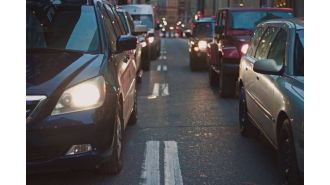Why does public transport fail in India
Every1 loves to blame the government/ politicians, no1 really tries to fix anything.
Public transportation in India is a vital aspect of the country's economy and infrastructure. It is meant to provide a cheap and efficient mode of transportation for the general public. In recent years, the failures of public transport in India have become increasingly apparent. The Indian public transport system faces several challenges that have contributed to its failure to meet the expectations of the people.
One of the primary reasons for the failures of public transport in India is inadequate infrastructure. The lack of proper infrastructure has led to overcrowding, delays, and accidents. The roads are often poorly maintained, and there are not enough bus stops, metro stations, or railway stations to accommodate the growing number of people who use public transportation.
Another major issue that has contributed to the failures of public transport in India is the lack of funding. Public transport in India is heavily subsidized by the government, but the funds allocated are often inadequate. As a result, the transport systems are unable to maintain their vehicles properly, and they frequently break down, leading to delays and cancellations.
The reason why the government has no funds is that the "smart" people live overseas and don't pay taxes and the very smart people have accountants that abuse every possible loophole in the archaic tax code. Like the overpaid CEO of an airline company who compared the Dubai metro with Indian metros (gleefully forgetting that the population of Dubai is the same as the population of a street in India!)
The lack of coordination between different modes of transport is another significant factor contributing to the failures of public transport in India. There is no single authority that oversees all modes of transport, which has led to a lack of integration and coordination between different modes of transport. For instance, there is no proper coordination between bus and metro services, leading to long waiting times for commuters who need to switch between the two modes of transport.
And, that is where the taxi/ auto guys abuse the flawed system n overcharge residents, who end up hating everything!
The poor quality of service is also a significant contributor to the failures of public transport in India. The vehicles used for public transportation are often old, poorly maintained, and overcrowded. This makes the journey uncomfortable and unsafe for passengers. Additionally, the lack of safety measures such as seat belts and airbags in buses and other public transport vehicles is a serious concern for passengers.
The inadequate number of vehicles is another issue that has contributed to the failures of public transport in India. The demand for public transport is far higher than the supply. This leads to overcrowding, long waiting times, and delays. The lack of sufficient vehicles has also led to the use of unsafe and overcrowded vehicles, such as rickshaws and tempos, which are often involved in accidents.
The government needs to take a crazy risk and allocate more funds for public transport, improve infrastructure, coordinate between different modes of transport, and ensure that vehicles are properly maintained and safe for passengers. India's GDP will go up.






